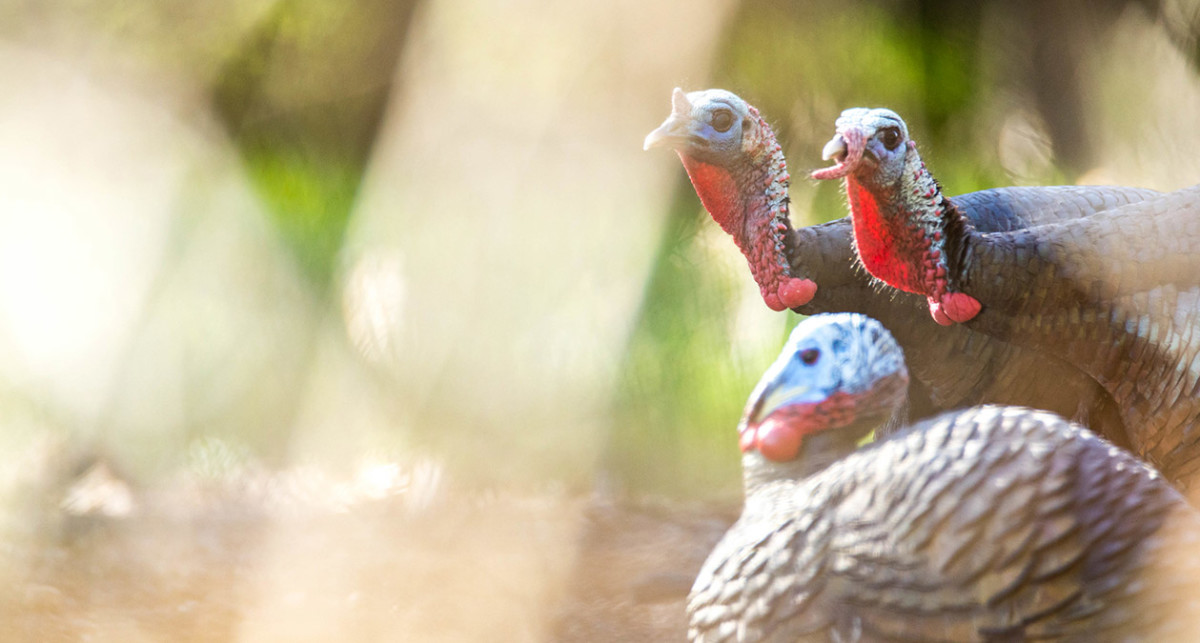
There’s one frustrating scenario every turkey hunter is familiar with: a gobbling tom comes in on a string, but hits an invisible wall at 75 yards before shuffling away. There are plenty of reasons why a longbeard will change his mind and pull a 180, but the most common involves some level of decoy shyness. It’s a major buzzkill.
Dave Smith, founder of Dave Smith Decoys and someone who knows more about turkey behavior than anyone I’ve ever met, has spent a good portion of his life watching how wild birds react to dekes. He believes that when a bird flares, it’s time to tone down the spread.
“If a bird acts decoy shy, I often go incredibly subtle,” Smith said. “I’ll put out a single feeding hen and minimize my calling so that it’s soft and infrequent. The beauty of a feeding hen is she’s not frozen still with her head upright, which can signal a bird trying to assess the situation. The feeding hen has her head down, which not only portrays a relaxed appearance, but can also give the tom the impression she hasn’t seen him yet. This can persuade him to strut in closer so she’ll get a look at his goods.”
Smith recommends keeping the decoy close so that the calls sound like they’re coming from the lone bird, rather than another hen hiding in the cover. I’ve seen this setup work well on birds that hang up, and have found that scratching can sell the whole ruse even better. Sometimes longbeards want the most natural, calm scene possible, and a soft clucking, purring, and yelping hen feeding without a care signals all is well.
Add Movement
Another trick for fooling cagey toms is to add some movement to your spread. Not all motion is good motion, though. A strutter that spins to face an approaching bird has spooked some gobblers for me. A full strutter with a fan that can be raised and lowered is a safer bet, but the movement it requires from you can make things tough. In a blind this isn’t much of an issue, but if you’re sitting with your back to a tree in the open, it can be tricky.
When I first started bowhunting turkeys I ran into this conundrum: I wanted some movement in my spread, but didn’t want to deal with running string to my blind. Instead, I glued some real feathers to my decoys on the base of the legs and on the neck. If you dig under the contour feathers of a real bird, you’ll find the soft down feathers that are ideal for this project. These fluffy feathers ripple in the tiniest of breezes and can offer the illusion that the decoys are moving ever-so-slightly. A dab of super glue per feather does the trick, but I’ve also stapled them directly to two-dimensional dekes on run-and-gun hunts.
If you don’t want to mess with the arts and crafts, there are also breeding pair decoys that offer the appearance of a jake and hen getting busy. A tom that lays eyes on this will throw caution to the wind out of pure anger and jealousy.
It’s important to note that with all decoys, but particularly any that move, you need to be able to see well beyond your spread. You don’t want to endanger yourself by calling a shotgun-toting hunter into your setup rather than a tom.
Forget Fakes
This may seem obvious, but when you’re hunting decoy-shy birds, sometimes it’s best to take the decoys out of the equation. Birds that are decoy shy are often call shy, meaning that no matter what you do they aren’t going to two-step into shotgun range. Usually they commit to a point where they can assess the situation safely. If they do this, but don’t lay eyes on a real turkey, they’ll almost always err on the side of caution and stay out of range.
To combat this, think like an elk hunter. Hit the woods with a buddy and set up a staggered calling scenario.
The first time I executed this was with my dad. We spotted a midday Minnesota strutter that showed himself a few times, but wouldn’t finish the march. We slipped through the woods near his strutting zone and my dad backed off 50 yards, which meant the longbeard needed to close 50 fewer yards for me to shoot. One plaintive set of yelps was all it took.
If you go this route, it’s important to create some rules. Set up so you can see one another, and establish who is the shooter and who is the caller. No one moves from their original setup until a predetermined time or signal announces the hunt is over. This tactic is absolutely deadly but needs to be conducted safely.
Pressured birds are the toughest to kill, but that’s part of what makes it fun. Turkey hunting would be a lot less interesting if every setup ended with a dead tom laying in your spread. And while these tips won’t guarantee success on every hunt, they’ll get you a lot closer to consistently fooling decoy-shy jellyheads.
Feature Image by Captured Creative.





